Unusual, smart and safe: The little stars of the IAA - from BMW to Xyte Mobility

The small city car called Beastie is always on the move with a roof and always with four wheels.
(Photo: Rudolf Huber/SP-X)
The IAA in Munich is over, and the show's stars, like the Mercedes GLC and the VW ID.Cross Polo, are back home. In the spotlight of the big brands, smaller manufacturers and their products are quickly pushed to the sidelines. Yet, it's worth taking a closer look here, too.
At a trade fair like the IAA, all eyes almost automatically turn to the premieres of the major automakers. But amidst the hustle and bustle of the halls, there are also plenty of smaller trade fair stars. Here's a selection.
Xyte Mobility
Munich-based Xyte Mobility undoubtedly brought the longest-standing expertise in automotive engineering to the trade fair booth. The team, led by mastermind and former BMW and Jaguar board member Wolfgang Ziebart, has set itself the goal of making urban mobility quieter, cleaner, and safer. Their first project, called Xyte One, was inspired by the BMW C1 scooter, which launched in 2000 as an "innovative vehicle concept on two wheels."
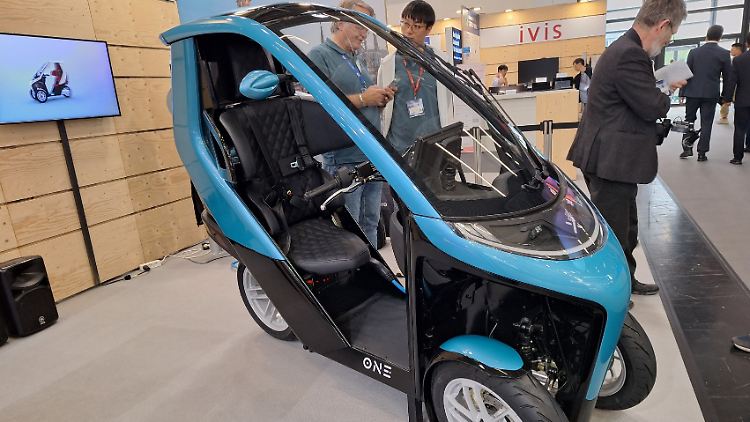
Fully electric: The Xyte One was inspired by the BMW C1 scooter from 2000.
(Photo: Rudolf Huber/SP-X)
Like its not-so-successful predecessor, the One also features a safety cell and seatbelts that allow riding without a helmet. However, the scooter isn't equipped with a combustion engine, but runs fully electric with the Microlino's drive system. And it has two front wheels with tilting technology. Therefore, it can be driven with either an A1 driver's license or a regular Class B car driver's license. And not as a rolling traffic hazard, but at speeds of up to 100 km/h.
Xyte claims the range of the 15-horsepower vehicle with its 7.6-kWh battery is up to 112 kilometers. The first vehicles are scheduled to launch in several European cities, including Munich, in early 2026, with prices starting at around €13,000.
Vision CE from BMW
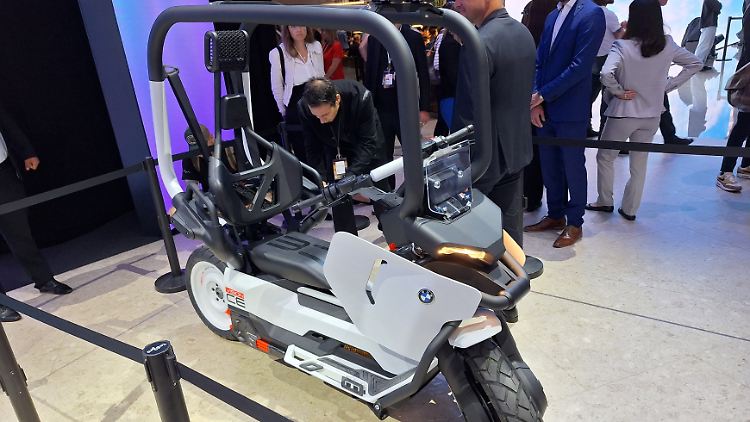
Does it have a chance of being made into series production? Thanks to its sensors, the Vision CE can stand on its own.
(Photo: Rudolf Huber/SP-X)
At the same time, another reincarnation of the C1 premiered at the BMW stand. However, the Vision CE is explicitly described as a concept car and is intended to gauge reactions to the version of the production model, the CE 02, with a roof and frame.
Its special feature: The compact scooter features impressive sensor technology that keeps it upright even when stationary—allowing users to rest their feet on the footrests while stopping at traffic lights, for example. Would such a gimmick make it into series production? The corresponding balance exercises at the IAA were certainly very popular.
E-scooter from project urban 2|3
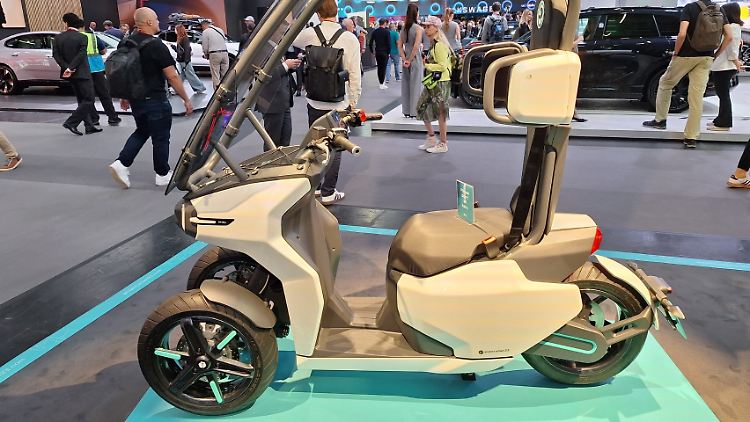
The city cars from project urban 2|3 are available with two or three wheels, with or without a roof.
(Photo: Rudolf Huber/SP-X)
The company project urban 2|3 relies on a platform for all possible needs. It, too, aims to revolutionize urban mobility, and the means to do so is already hidden in its name: The e-scooters are based on an identical platform and feature two or three wheels, depending on their intended use. Versions conceivable include those used in first aid, pizza delivery, maneuverable police transport, or simply as a commuter vehicle.
The vehicles are modular in design, can accommodate up to three batteries, can reach speeds of 45 or 100 km/h as required, and are available with or without a roof.
Beastie by Pix Moving
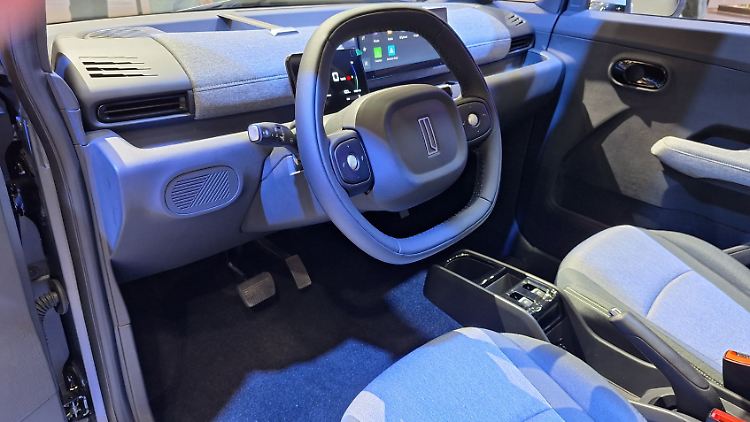
The interior of the Beastie resembles that of a "real" car and feels rock solid.
(Photo: Rudolf Huber/sp-x)
A "little beast" from China is always on the move, always with a roof and always with four wheels. The company Pix Moving brought its small city car, called the Beastie, to Munich. Created with the help of AI and additive manufacturing, it's brightly colored, fun to look at, and highly customizable. The micro-electric vehicle with the 3D-printed chassis is similar in size to the original Smart, measuring 2.53 meters long, has two seats, rear-wheel drive, and a top speed of 90 km/h with a range of up to 180 kilometers. The battery capacity is 15 kWh.
Next year, Pix Moving plans to unleash the beast on Europe; according to a spokesperson, the base price will likely be around an ambitious 20,000 euros.
Linktour alumni
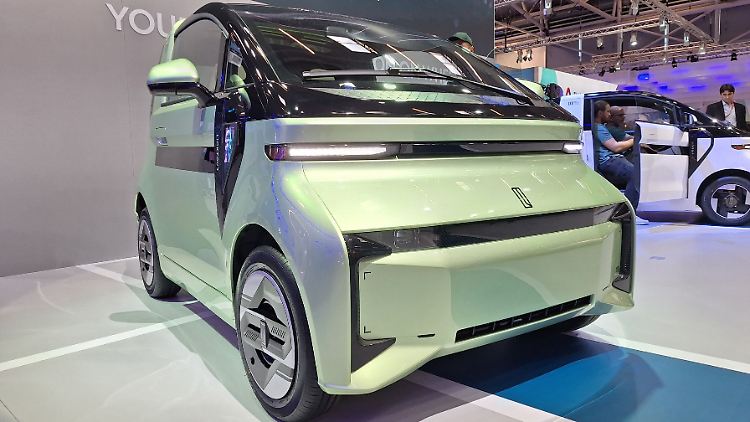
The two aluminum models from manufacturer Linktour are scheduled to launch in Italy next year.
(Photo: Rudolf Huber/SP-X)
The two speedsters from manufacturer Linktour, which used the IAA to announce its market launch in Europe, are also in the original Smart format. They'll be launching in Rome, with the Alumi Urban Sprite in the L6e class, capable of speeds of up to 45 km/h, and the Alumi Urban Elite in the L7e class, capable of a top speed of 90 km/h. The name says it all: The cube-shaped vehicles have an aluminum frame and, at 1.80 meters, a comparatively long wheelbase. The ranges according to Chinese standards are 120 and 180 kilometers, depending on the version; the WLTP value is likely to be lower.
According to the manufacturer, the "big" Alumi features EPS, ABS, EBD, and a brake assist system. Given this safety standard, the prices of up to 15,000 euros being traded at the trade fair are a real challenge to Microlino and the like.
Source: ntv.de, Rudolf Huber, sp-x
n-tv.de





